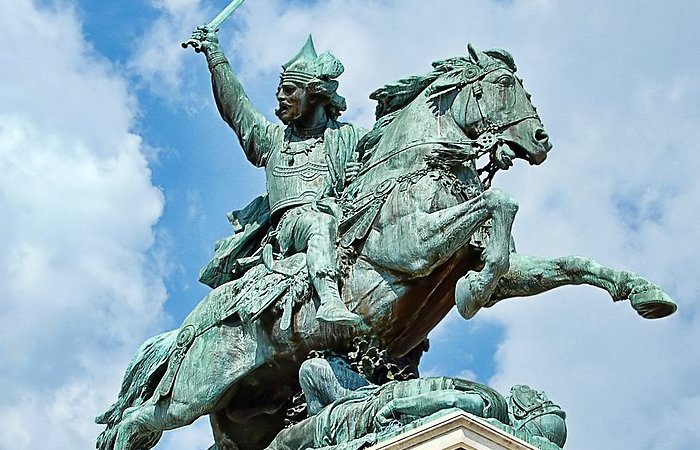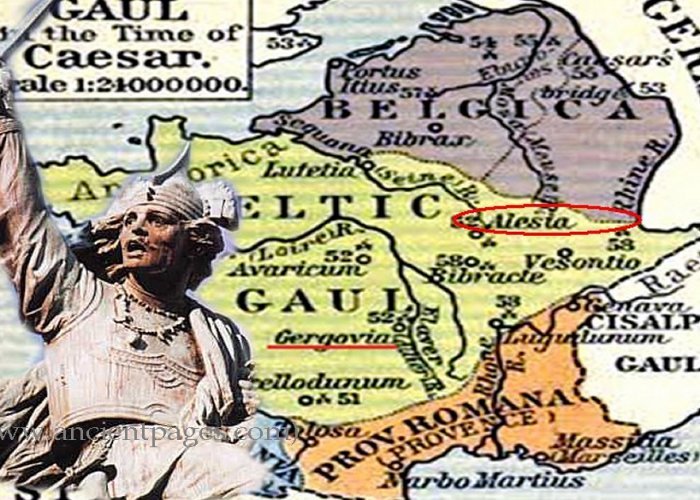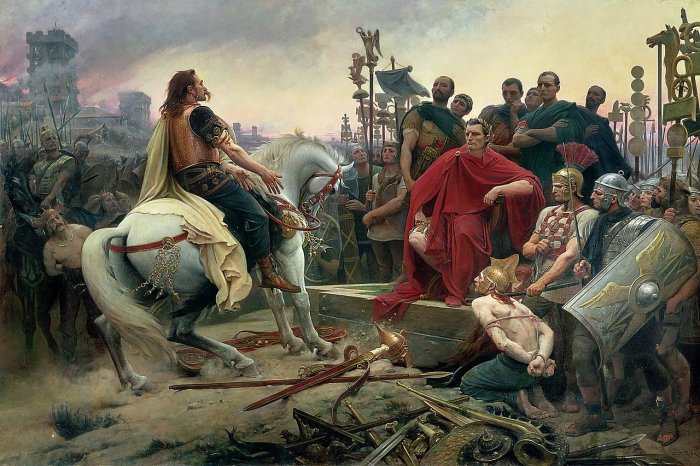Vercingetorix – Visionary Nobleman And Mighty Warrior Who Led Army Of Gallic People Against The Roman Empire
A. Sutherland - AncientPages.com - Vercingetorix was an Arverni nobleman and a prominent figure in Gaul, recognized as the most renowned leader among the Gauls. He was known for his formidable skills as a warrior and played a significant role as an adversary to the Romans.
Statue of Vercingetorix , Place de Jaude in Clermont-Ferrand. IMage credit: Fabien1309 - CC BY-SA 2.0 FR
The young man was filled with ambition, driven by a clear vision of what he aimed to achieve: his dream was to unite all of Gaul. His name may not have been 'Vercingetorix,' a title meaning "supreme warlord" or "king of great warriors," but it symbolized the greatness he aspired to embody.
He and his father were much alike. His father was Celtillos (Celtillus), the Avernian, leader of the Gallic tribes. In Christopher Pelling's , 'Plutarch Caesar' we read that 'Celtillus, had been put to death by the Gaul [his own countrymen] when they thought he was aiming for tyranny.” Celtillus had already held a position of primacy but he also “was aiming for kinship…'
Were the Gaul tribes perhaps afraid of Celtillus’ leadership giving him the power to act oppressively or unjustly? It’s difficult to say because there is a lack of historical records on Arvernian kings from the time between 121 BC and 52 BC, but Celtillus was already associated with assassinations, intrigue, and conspiracies.
When Celtillus, leader of the Arverni tribe was murdered, his son Vercingetorix blamed the Romans because it looked as if his father was killed by someone using Roman weapons. He wanted revenge and was not afraid to follow in his father’s steps.
The only way to retain freedom was to unite forces and act together.
Vercingetorix’s uncle, worried about Roman retribution, expelled him from the Arverni town of Gergovia on the Gergovie plateau, but the young warrior did not give up.
The young man was aware that Caesar had already finished his campaign against the Gaul and his definitive goal was - to subdue all of them.
Getting little support from the nobles, he was forced to raise his own army from the poorest classes. He also raised support from young warriors from thirty tribes, and returned, proclaiming himself chief of his own Arverni tribe.
He was still prepared to do whatever was in his power to lead the Gallic people against the Roman Empire, but it wasn’t easy. His direct enemy was powerful - invincible Caesar and his army.
Vercingetorix adopted more current styles of warfare, but his military assets could not be compared to the great army of Caesar's soldiers.
Vercingetorix lays his weapons at Caesar's feet ( historical painting by Lionel Royer, 1899) - Image credit: Lionel Royer -Musée CROZATIER du Puy-en-Velay. — http://www.mairie-le-puy-en-velay.fr - Public Domain
On the other hand, Caesar knew that if the tribes of Gaul decided to form a strong Gallic alliance, it would be much more difficult for his soldiers to conquer them.
Taking of the mountain stronghold of Gergovia (52 BC) in a battle, it was a success for Vercingetorix and AncientPages described this military encounter.
But the Siege Of Alesia was the last decisive battle that ended Gallic independence in France and Belgium. The great Gallic leader, Vercingetorix, decided to surrender the next day.
Reflecting on his fate, it's clear that he was not accorded the respect his bravery merited by his captors. Instead, he endured six long years of imprisonment in Rome. In 46 BC, Vercingetorix met his end—not on the battlefield where proud and courageous warriors often find their final rest—but in a manner that strongly contradicted the valor he had shown throughout his life.
He was publicly beheaded (or strangled) as a part of Caesar’s victory celebrations, and we can say that humiliation has never had limits.
With this development, the final significant obstacle to Rome's full conquest of Gaul quietly faded away, marking a pivotal moment in history.
Written by – A. Sutherland AncientPages.com Staff Writer
Updated on Oct 28, 2024
Copyright © AncientPages.com All rights reserved. This material may not be published, broadcast, rewritten or redistributed in whole or part without the express written permission of AncientPages.com
Expand for referencesReferences:
S. Sandler, Ground Warfare
M. L. Lanning, Battle 100: The Stories Behind History’s Most Influential Battles
Castleden R. Conflicts that Changed the World
More From Ancient Pages
-
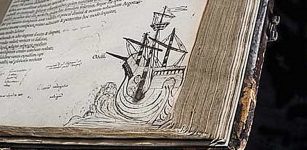 January 2016: Lost Library Of John Dee Revealed In A Special Exhibition
Archaeology | Jan 24, 2016
January 2016: Lost Library Of John Dee Revealed In A Special Exhibition
Archaeology | Jan 24, 2016 -
 Civita di Bagnoregio – Magnificent 2,500-Year-Old Etruscan City In The Sky Is Struggling To Survive
Featured Stories | Jun 23, 2021
Civita di Bagnoregio – Magnificent 2,500-Year-Old Etruscan City In The Sky Is Struggling To Survive
Featured Stories | Jun 23, 2021 -
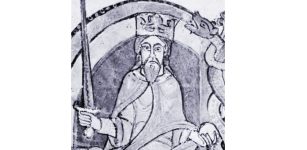 On This Day In History: David I Becomes King Of Scots – On Apr 27, 1124
News | Apr 27, 2016
On This Day In History: David I Becomes King Of Scots – On Apr 27, 1124
News | Apr 27, 2016 -
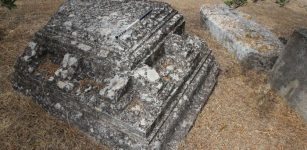 LIDAR Disovers 2,000-Year-Old Roman Temple Under Church In Danilo, Croatia
Archaeology | Dec 6, 2022
LIDAR Disovers 2,000-Year-Old Roman Temple Under Church In Danilo, Croatia
Archaeology | Dec 6, 2022 -
 How Neanderthal Language Differed From Modern Human – They Probably Didn’t Use Metaphors
Human Beginnings | May 21, 2024
How Neanderthal Language Differed From Modern Human – They Probably Didn’t Use Metaphors
Human Beginnings | May 21, 2024 -
 Forgotten Richly Decorated Rock-Cut Cave Churches Of Goreme And Cappadocia
Featured Stories | Dec 27, 2018
Forgotten Richly Decorated Rock-Cut Cave Churches Of Goreme And Cappadocia
Featured Stories | Dec 27, 2018 -
 What Were Ancient Egyptian Schools Like?
Ancient History Facts | Jul 14, 2016
What Were Ancient Egyptian Schools Like?
Ancient History Facts | Jul 14, 2016 -
 Enigmatic Newport Tower – Built By The Vikings, Knights Templar, Freemasons Or Someone Else?
Featured Stories | Aug 1, 2024
Enigmatic Newport Tower – Built By The Vikings, Knights Templar, Freemasons Or Someone Else?
Featured Stories | Aug 1, 2024 -
 Why Did Stone Age People Cut Off Their Fingers?
Archaeology | Dec 6, 2018
Why Did Stone Age People Cut Off Their Fingers?
Archaeology | Dec 6, 2018 -
 Underground Civilizations – True Rulers Of Earth – Part 1
Ancient Mysteries | May 7, 2019
Underground Civilizations – True Rulers Of Earth – Part 1
Ancient Mysteries | May 7, 2019 -
 Mythical Beautiful Adarna Bird And Its Harmful Magical Power In Mythology Of Philippines
Myths & Legends | Jan 25, 2017
Mythical Beautiful Adarna Bird And Its Harmful Magical Power In Mythology Of Philippines
Myths & Legends | Jan 25, 2017 -
 Long-Lost Ancient Tomb Of ‘China’s Shakespeare’ Finally Found
Archaeology | Aug 31, 2017
Long-Lost Ancient Tomb Of ‘China’s Shakespeare’ Finally Found
Archaeology | Aug 31, 2017 -
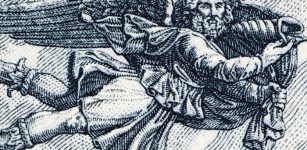 Boreas – Mighty North Wind God In Greek Mythology
Featured Stories | Mar 26, 2023
Boreas – Mighty North Wind God In Greek Mythology
Featured Stories | Mar 26, 2023 -
 Discovery Of Chromosomes Offers Evidence Of Ancient Humans Living In South America Over 18,000 Years Ago
Archaeology | Aug 21, 2022
Discovery Of Chromosomes Offers Evidence Of Ancient Humans Living In South America Over 18,000 Years Ago
Archaeology | Aug 21, 2022 -
 Hindu Monkey God Hanuman May Have Been Homo Erectus – Scientist Says
Hindu Mythology | Mar 3, 2020
Hindu Monkey God Hanuman May Have Been Homo Erectus – Scientist Says
Hindu Mythology | Mar 3, 2020 -
 On This Day In History: Chinese General Koxinga Seizes The Island Of Taiwan – On Feb 1, 1662
News | Feb 1, 2017
On This Day In History: Chinese General Koxinga Seizes The Island Of Taiwan – On Feb 1, 1662
News | Feb 1, 2017 -
 170-Million-Year-Old Sea Monster Identified As The Oldest Mega-Predatory Pliosaur
Evolution | Oct 23, 2023
170-Million-Year-Old Sea Monster Identified As The Oldest Mega-Predatory Pliosaur
Evolution | Oct 23, 2023 -
 Bizarre And Rare Finds In Viking Houses – What Was Behind This Mysterious Practice?
Vikings | Nov 17, 2024
Bizarre And Rare Finds In Viking Houses – What Was Behind This Mysterious Practice?
Vikings | Nov 17, 2024 -
 John Dee’s Magical Mirror Used To Contact Spirits Can Be Traced To The Aztecs
Archaeology | Oct 7, 2021
John Dee’s Magical Mirror Used To Contact Spirits Can Be Traced To The Aztecs
Archaeology | Oct 7, 2021 -
 Mysterious Hieroglyphs Point To The Location Of Queen Nefertiti’s Tomb?
Archaeology | Sep 29, 2022
Mysterious Hieroglyphs Point To The Location Of Queen Nefertiti’s Tomb?
Archaeology | Sep 29, 2022

